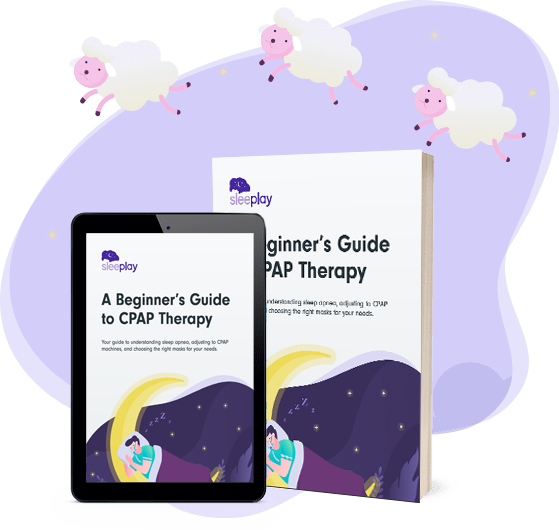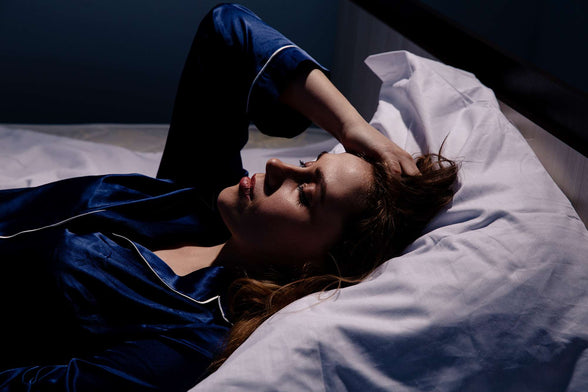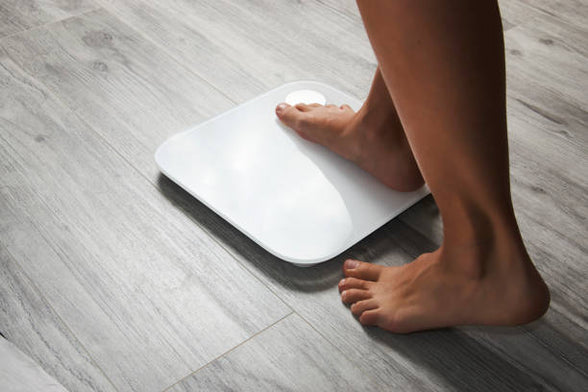What Is Sleep Apnea and How to Treat It?
Sleep apnea is one of the most common sleep disorders and it’s also the one with the most health complications. This disorder can decrease your quality of life, even if you don’t notice when you stop breathing at night.
Continue reading to learn more about sleep apnea and what’s the best method to treat it.
What Is Sleep Apnea?
Sleep apnea is a sleep disorder that causes your breathing to stop and start again multiple times a night. It can be a serious health problem since it can decrease oxygen levels in important organs, such as the brain and heart during sleep.
Suffering from sleep apnea can increase the risk of developing high blood pressure, heart disease, heart failure, and of suffering heart attacks and premature death. However, proper treatment can decrease these risks greatly.
Sleep Apnea in Adults
According to the American Heart Association, around 34% of adult men and 17% of adult women have sleep apnea. Some risk factors for the development of sleep apnea in this age group are obesity, excessive alcohol consumption, use of sedative medication, type 2 diabetes, and a family history of sleep apnea.
Other factors that may increase the risk of sleep apnea are large tonsils, a thick neck and any other condition that could cause the upper airway to narrow.
Sleep Apnea in Children
Researchers estimate that 1-5% of children experience sleep apnea at some point in their lives. These episodes of sleep apnea are often related to large tonsils or adenoids, significant malocclusion, abnormally small jaws, and obesity. Seasonal allergies can worsen sleep apnea in children due to nasal congestion and further narrowing of the upper airways.
Sleep Apnea Symptoms
Breathing that becomes abnormally slow and shallow, followed by a sudden cessation of breathing that lasts several seconds before resuming.
These symptoms are often first noticed by a partner or roommate, and witnessing them can be quite alarming for the observer.
These are some symptoms you need to be aware of if you think you or someone close to you could be experiencing sleep apnea:
Excessive daytime sleepiness
People with sleep apnea experience micro-awakenings throughout the night. These awakenings often go unnoticed—the person is only awake for a second or two to restore breathing—but it still affects the quality of sleep.
Loud snoring
This usually is the first symptom people notice, especially because snoring tends to become increasingly louder as time passes. Snores seem to be caused by the higher air pressure needed to increase airflow through the narrowed airway.

Morning headaches
The decreased blood supply to the brain during the brief apnea periods can cause headaches that are worse upon awakening, but get better as the day progresses.
Dry mouth
Struggling to breathe at night and constantly snoring leads to mouth breathing; this decreases moisture and salivary flow at night. The worse the sleep apnea is, the drier your mouth is going to be.
Irritability or frustration
Thinking that you are getting a full night of sleep but still feeling tired when you wake up can be extremely frustrating, especially if it happens every day.
Reduced focus
High-quality sleep is essential for good brain function throughout the day. Sleep apnea episodes can interrupt your sleep, causing difficulties when attempting to concentrate on specific tasks, which will decrease your professional or academic performance.
Do you suspect that you may have sleep apnea? We recommend taking a Home Sleep Test to help diagnose your condition.
During a virtual appointment, the doctor may prescribe a home sleep test if necessary. Then, you will receive the world's smallest home sleep apnea test, the Night Owl is the size of a fingertip and weighs 1 ounce. Once you receive it, you can take the test from the comfort of your own home.
Types of Sleep Apnea
There are three types of sleep apnea or sleep-disordered breathing. Even though they share the main symptoms, it’s important to know which one you could be experiencing so you can get a treatment tailored to your needs.
Obstructive Sleep Apnea (OSA)
Obstructive sleep apnea is the most common type of sleep apnea. When a person has OSA, the soft tissue on the back of the throat repeatedly collapses, creating a complete or partial obstruction while they sleep.
People experiencing OSA have normal breathing patterns and their lungs work properly, so during apnea episodes their bodies continue to try to breathe, but air isn’t able to pass through the upper airway.
This sleep disorder is more common in men, in overweight and obese people, during pregnancy, and in people who sleep on their backs—they usually have narrower upper airways or have some degree of relaxation in their throat muscles that allows for repeated obstruction of the airways while lying down.
People with OSA often wake up during the night feeling scared because they can’t breathe, but they don’t remember that these awakenings happened when they wake up the next day.
The most common symptoms of obstructive sleep apnea are daytime sleepiness and loud snoring. OSA puts people at a higher risk of multiple medical conditions, such as strokes, heart attacks, certain types of irregular heart rate, such as atrial fibrillation, and hypertension.

Central Sleep Apnea (CSA)
Central sleep apnea is an altered breathing pattern in which the person stops and starts breathing again repeatedly during sleep. It is caused by alterations in the sleep centers of the brain, which results in the brain not sending appropriate signals to the muscles that are responsible for breathing, such as the diaphragm.
The most common risk factors for CSA are history of strokes, past brain infections, congenital defects of the brain, chronic opioids use, and sleeping at high altitudes where atmospheric pressure is lower. CSA is not related to obesity.
Complex Sleep Apnea Syndrome
This is a combination of obstructive sleep apnea and central sleep apnea. It’s usually harder to identify and treat than other types of sleep apnea. Fortunately, it’s the least common out of all of them.
The symptoms of Complex Sleep Apnea are going to depend on whether the person is experiencing more OSA or more CSA. This is usually seen in obese people who have previous history of diseases that affect brain function.
Sleep Apnea Treatments
There are many approaches to treating sleep apnea, and the approach that you and your healthcare provider decide to take is going to depend on the type of sleep apnea you have, what’s causing it and how severe it is.
Possible treatment options for sleep apnea include:
Lifestyle changes
Some strategies such as weight loss and decreasing alcohol consumption and sleep medicine use can drastically improve sleep apnea symptoms.
Mouthpieces
Oral appliances are often used in sleep apnea when the person has malocclusion of the teeth or malposition of the jaw.
Continuous positive airway pressure (CPAP)
This is the most used and most effective treatment for obstructive sleep apnea, especially for people who are experiencing excessive daytime drowsiness. These devices provide air at a pressure that’s higher than atmospheric pressure through a face mask, allowing the upper airway to stay open while the person sleeps. The first two weeks of use of these devices should be monitored by a sleep specialist.

Nerve stimulators
These are implanted devices that stimulate the nerve that controls the tongue. This stimulation pushes the tongue forward during sleep, so it doesn’t obstruct the upper airway by rolling backwards.
Surgery
Some people may need to get a surgical procedure done if their sleep apnea is caused by excessive soft tissue in the upper airway. One of the most common surgeries done for this purpose is the uvulopalatopharyngoplasty. In this procedure, part of the soft palate, the uvula, the tonsils, and the adenoids are removed to open up the upper airways. It’s more effective in people with mild sleep apnea.
Medications
There are some medications, such as acetazolamide, that can be used to stimulate the breathing centers in people with central sleep apnea. They are also effective in people who don’t tolerate the use of CPAP machines.
Best Products for Sleep Apnea
You don’t have to compromise your comfort or lifestyle to improve the quality of your sleep. Sleeplay has a wide variety of the best CPAP machines and masks that adjust to your needs, your preference and your face!

Remember that CPAP machines are the most reliable way to treat your sleep apnea. Even though it takes some time to get used to wearing the device while you are sleeping, once you get the hang of it, you’ll never want to sleep without it again.
Sleep Apnea Diagnosis
If you are experiencing breathing problems while you sleep, you need to consider that you may be experiencing sleep apnea. Here are some tips to get a correct diagnosis.
Be Prepared for Your Doctor’s Visit
If you think you may have sleep apnea, the first thing you need to do is go to your primary care physician. Your doctor will take your medical history and other relevant information they may need, as well as do a physical exam; then they will order further tests, such as a home sleep apnea test, and refer you to a sleep specialist if they deem it necessary.
They could also refer you to an ear, nose and throat specialist, a neurologist or cardiologist, depending on what they see in their evaluation.
Getting Your Sleep Apnea Diagnosis
Once you have an appointment with the sleep specialist, they will do a sleep study to analyze your breathing pattern and heart rate while you sleep. This is a painless test that will help determine your diagnosis.
What to Do if You Are Diagnosed with Sleep Apnea
Once you have been diagnosed with sleep apnea, you and your doctors can discuss which treatment is better suited for your needs. The most common initial treatment is a combination of lifestyle changes and the use of a CPAP machine.
Sleep apnea can be a serious medical condition that affects your quality of life and it could even cause a premature death if untreated.
Have you been diagnosed with sleep apnea but can’t find a CPAP machine that suits your needs? Learn more about our products here!
Join the conversation!, login and comment.

Get your guide to understanding sleep apnea, adjusting to CPAP machines, and choosing the right masks for your needs.








